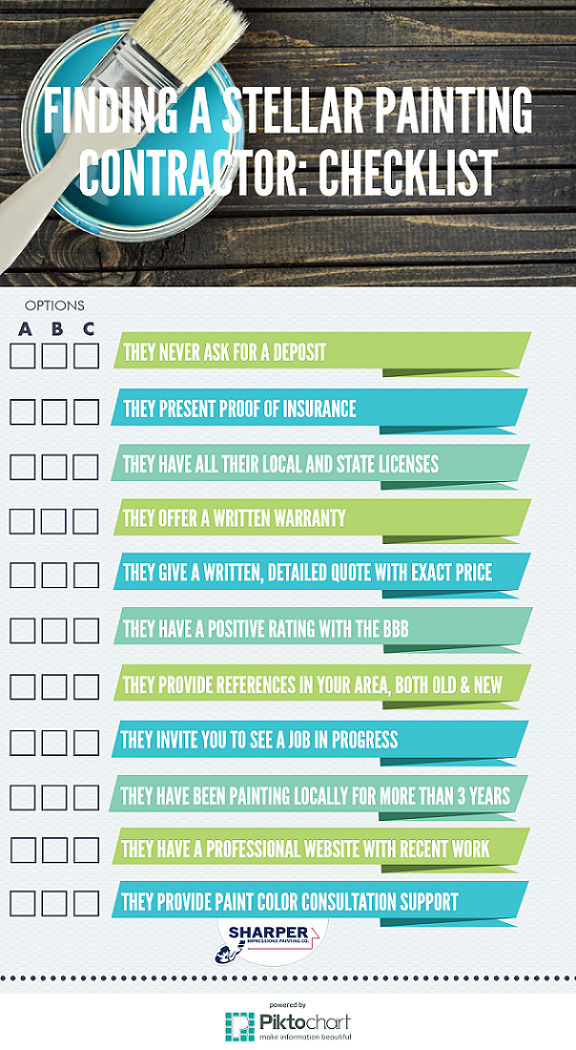Step-By-Step Overview To Preparing Your Wall Surfaces For Painting
Step-By-Step Overview To Preparing Your Wall Surfaces For Painting
Blog Article
Write-Up By-Bergmann Lindberg
When you're prepping your wall surfaces for painting, it's essential to adhere to a methodical process to guarantee a remarkable coating. Beginning by checking out the wall surface for any type of damage; this action can make or damage your project. As soon as you have actually determined any type of concerns, cleaning the surface effectively is necessary, as an unclean wall can impact paint attachment. After that, you'll require to spot any imperfections and use a guide. But there are specific methods and suggestions that can elevate your preparation game-- allow's discover those more to attain the very best outcomes.
Assessing Wall Surface Condition
Prior to you order your paintbrush, take a moment to examine your wall surfaces' problem. Look for any kind of noticeable damages like splits, openings, or peeling off paint. These flaws can impact just how the paint adheres and looks when it's completely dry. If you see any type of significant damages, you'll need to focus on repair work before diving right into painting.
Look very closely at the structure of your wall surfaces. Is the surface smooth, or exists structure that might need unique factor to consider? Smooth wall surfaces generally need much less prep, while textured surface areas might require even more time to repaint uniformly.
Additionally, take into consideration the previous paint job. If the old paint is shiny, it mightn't enable brand-new paint to stick appropriately. You'll wish to know if your walls have been painted with oil-based or water-based paint, as this can affect your choice of primer or paint.
Finally, bear in mind of any kind of dampness problems. If you see signs of water damages or mold and mildew, address these problems quickly to avoid further complications.
Cleaning up the Surface area
Once you've examined the problem of your walls, the following step is cleaning up the surface area. Beginning by collecting your supplies: a bucket, warm water, a mild detergent, a sponge or cloth, and a scrub brush for tougher areas.
Begin on top corner of the wall and work your method down. Mix the cleaning agent with cozy water in your container, then dip the sponge or fabric right into the solution. Wring it bent on prevent extreme wetness on the walls.
As you clean up, pay very close attention to locations that could've gathered dust, oil, or finger prints. For persistent spots, use the scrub brush gently to prevent harming the paint beneath. Wash your sponge or fabric regularly in tidy water to avoid spreading dirt around.
After cleansing, it's vital to clean the wall surfaces with a damp fabric to remove any kind of soap residue. This action guarantees a smooth surface for the new paint to follow.
Allow the wall surfaces to completely dry completely before carrying on to the next preparation actions. This extensive cleansing procedure will certainly aid produce a fresh canvas for your paint task, guaranteeing the most effective outcomes.
Patching and Priming
Patching and priming are important action in preparing your walls for a fresh layer of paint. Initially, check your walls for any openings, splits, or imperfections. Make use of a top notch spackling compound or patching paste to fill these locations.
Apply the substance with a putty blade, smoothing it out so it's flush with the bordering surface area. Permit it to completely dry totally, and afterwards sand it gently until it's smooth and even.
As soon as you've patched everything, it's time to prime. interior painting seal the patched areas, making sure the paint sticks correctly and provides an uniform surface. Choose a primer suitable for your wall kind and the paint you'll be making use of.
Use the guide making use of a roller for larger areas and a brush for edges and edges. If your covered locations are substantially big or porous, you might wish to use a 2nd layer of primer after the initial one dries.
After priming, let every little thing dry extensively before moving on to paint. This prep work will not only boost the appearance of your wall surfaces but also prolong the life of your paint job.
Take your time, and you'll be pleased with the results.
Verdict
By adhering to these easy actions, you can attain a smooth and specialist surface on your wall surfaces. Beginning by assessing interior painters portland , then clean and patch any type of blemishes prior to using primer. Remember to allow adequate drying time and make certain everything is smooth prior to you study painting. With the right prep work, you'll set the stage for a beautiful improvement in your space. Now, gather a knockout post , inhale the fresh air, and prepare yourself to repaint!
